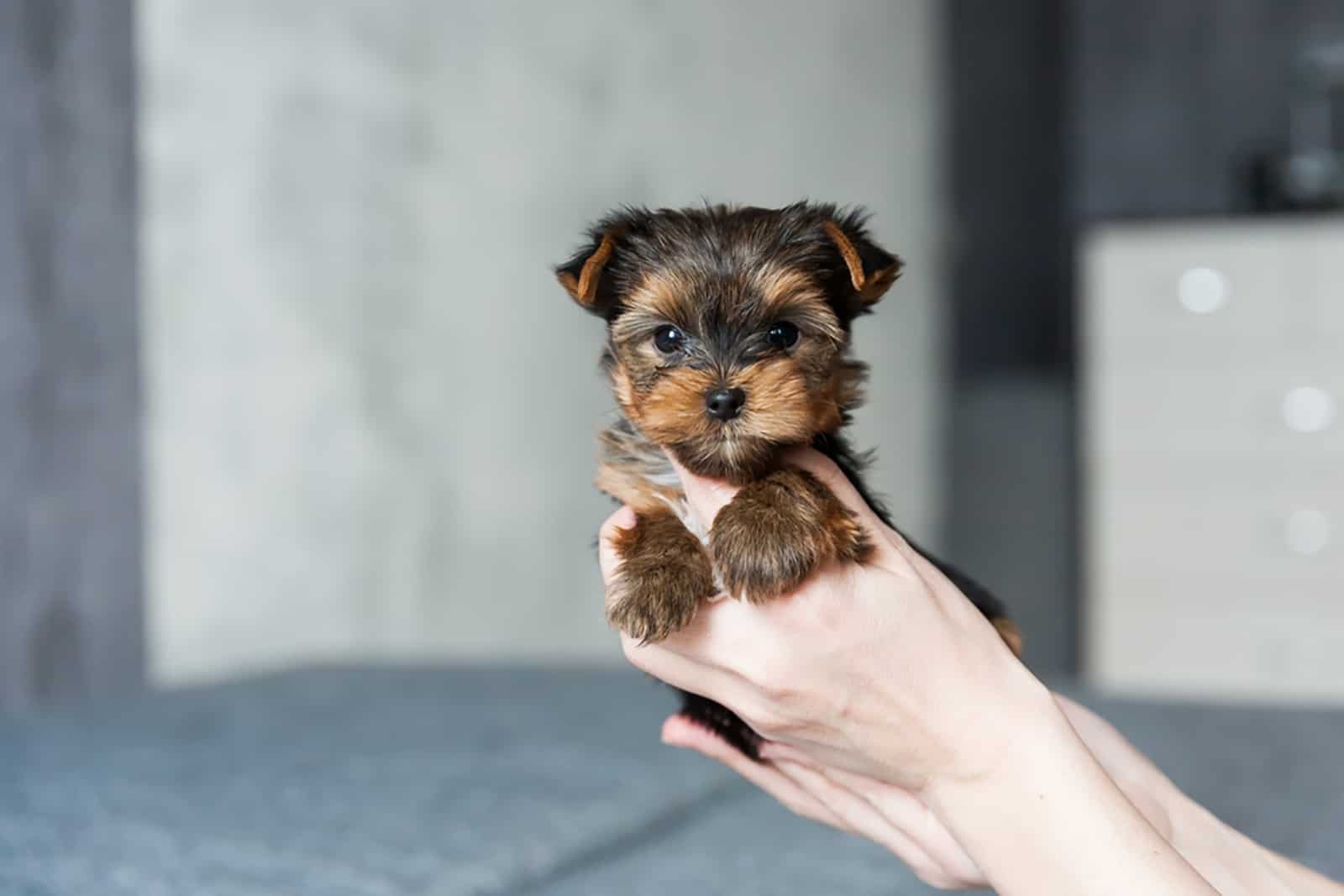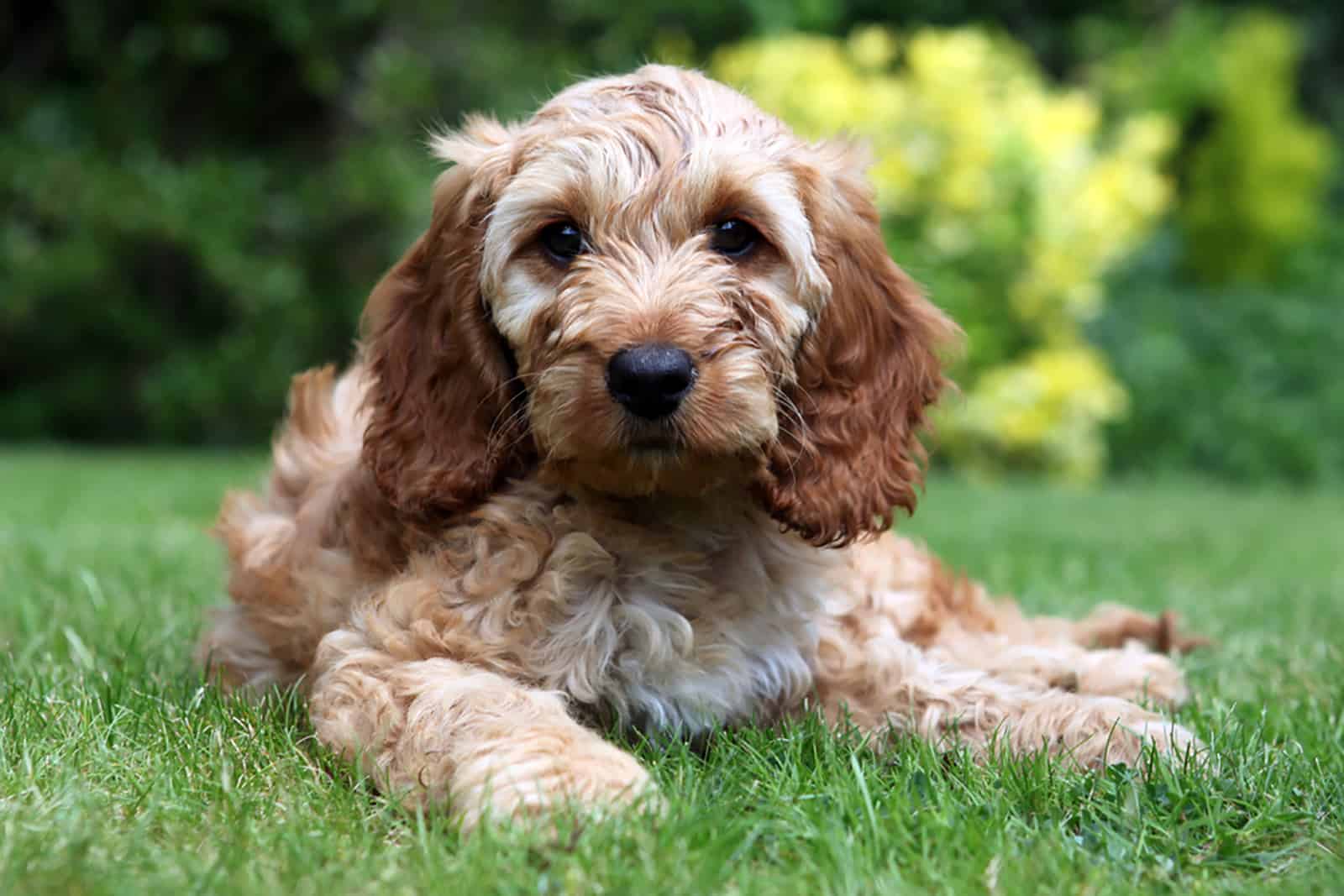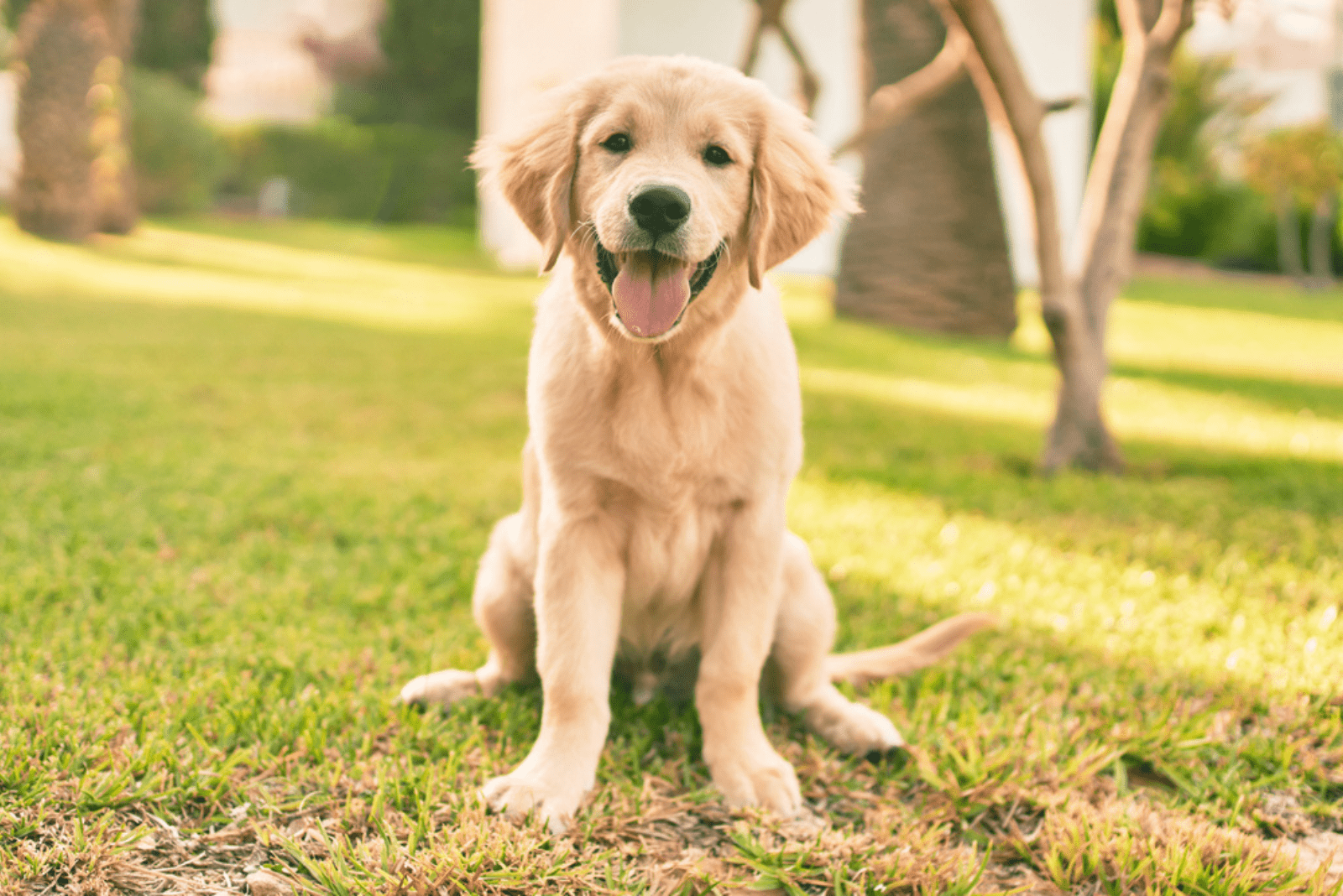The Fawn Doberman (or the Isabella Doberman) might be the dog for you if you’re seeking a loving, yet intimidating dog with a sweet, yet powerful character. But, this dog is more complex than it first appears.
We will cover the genetics, health issues, and unusual fawn coat color of the Doberman in this detailed guide. We’ll also look at their general look, activity needs, nutritional requirements, grooming habits, and suitability as family pets.
Let’s start with a brief review of that same fawn Doberman breed before going any further.
What Is An Isabella Doberman?
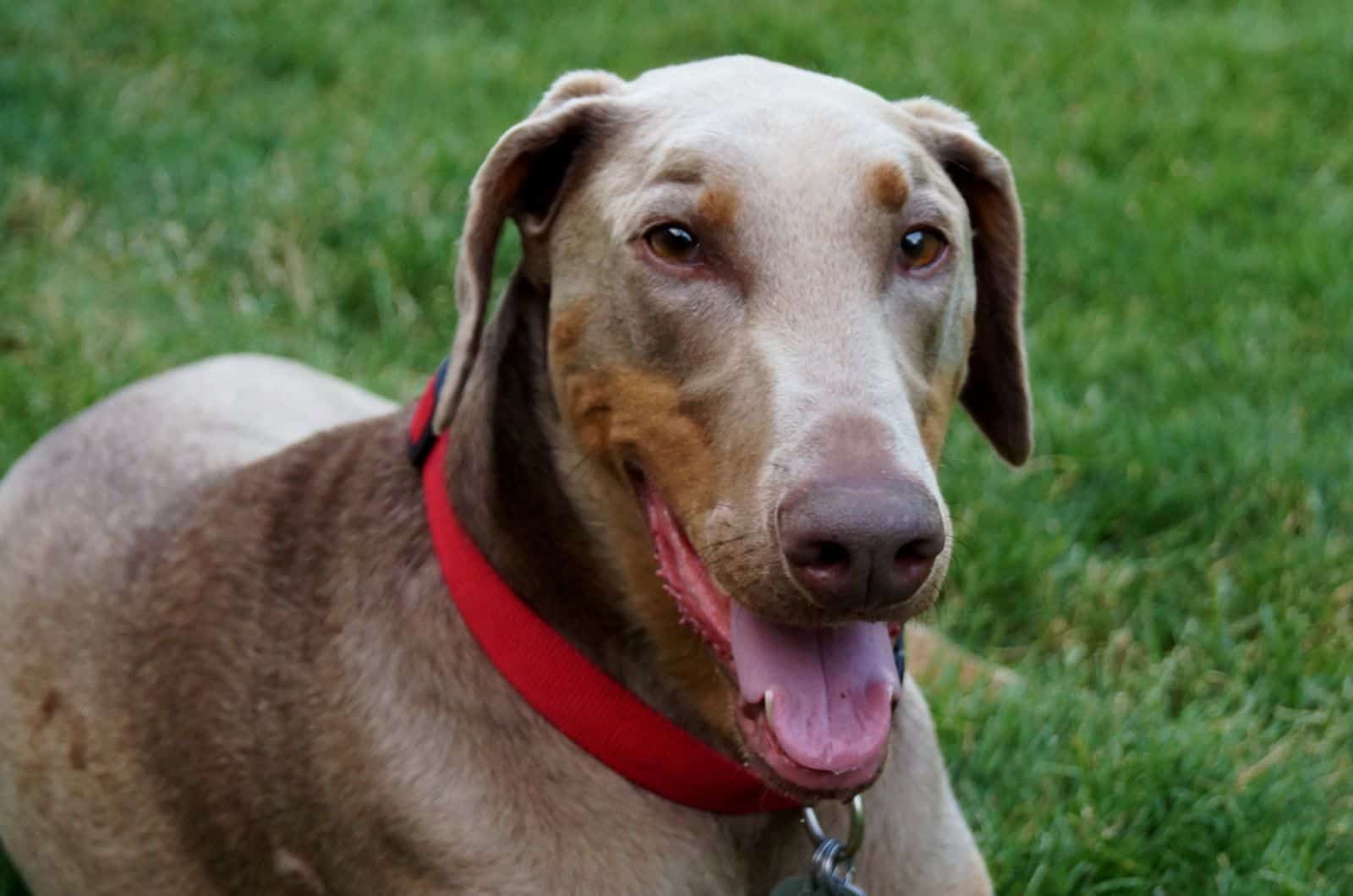
Dobermans in fawn and cream colors are not the same. In contrast to the cream Doberman Pinscher, which is regarded as partially albino with minimal melanin pigmentation, the fawn Doberman Pinscher nevertheless contains pigmentation in its coat.
A dog breed known as the Doberman Pinscher with a pale brown or tan coat is referred to as a fawn-colored Doberman Pinscher (or Isabella Doberman Pinscher). Melanophilin, a recessive gene that weakens the red-color-producing gene, is what gives the color.
There are two varieties of Doberman, the American Doberman Pinscher, and the European Doberman Pinscher, in addition to their color. The European is taller and heavier than the American, which accounts for the discrepancy in their sizes.
Contrary to the fawn American Doberman, which is recognized by the American Kennel Club, the fawn European Doberman isn’t really regarded as a breed standard in Europe (AKC).
What Is The Origin Of The Isabella Doberman Pinscher Dog Breed?
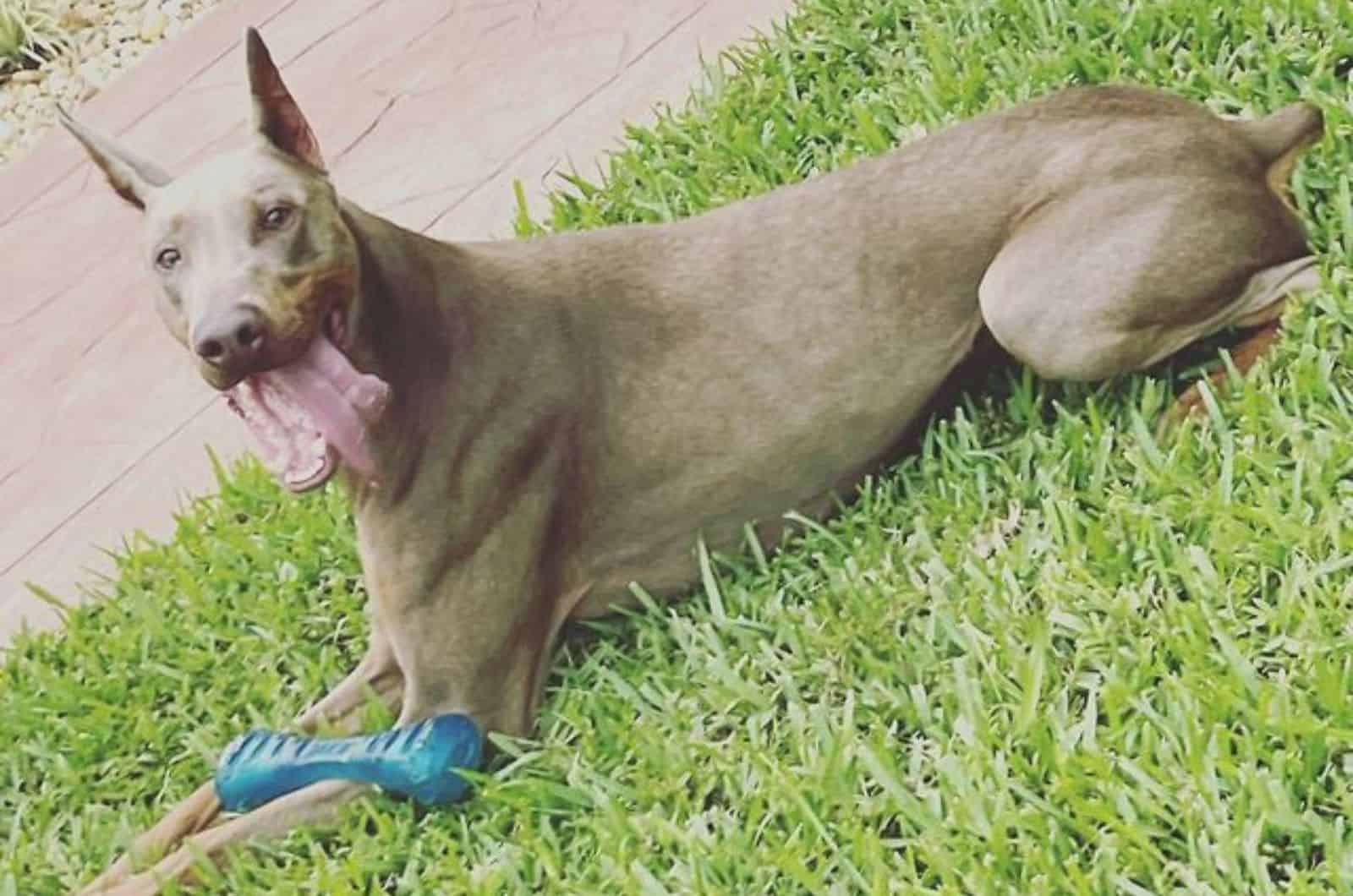
A tax collector by the name of Louis Dobermann once knew he needed a dog to accompany him while performing his functions in 19th-century Germany. He desired a dog that would be strong, devoted, and threatening all at once.
He gradually created the Doberman breed that is presently popular (the species bears his name, but with just one n.)
The English Greyhound, the Black as well as Tan Manchester Terriers, the German Shepherd, the German Pinscher, the Weimaraner, and the Rottweiler are among the breeds thought to have had an effect on the evolution of the Dobie.
The albino mutation was not without its associated health problems when it was accidentally created during the 1970s, giving rise to a new color – white.
Reputable breeders can help prevent albinism in Dobermans by using a straightforward DNA test since the particular gene has subsequently been identified. The Doberman is now the 18th most popular pet out of the 195 approved breeds by the AKC (The American Kennel Club).
The Doberman Pinscher is one of 30 breeds included in the AKC’s Working Group classification, which honors canines that have usually undertaken professions (therapy dogs, guard dogs, or work dogs).
After 1921, almost all of the best German sires and their offspring were imported to the U.S. After that, when World War II broke out, the Doberman Pinscher once more came under danger in Germany.
Many people believe that the breed might have gone extinct if Americans hadn’t imported so many dogs into the country in the past.
Germans and Britains both eliminated the word “Pinscher” from the name of the breed in the middle of the 20th century.
What Does The Isabella Doberman Pinscher Look Like?
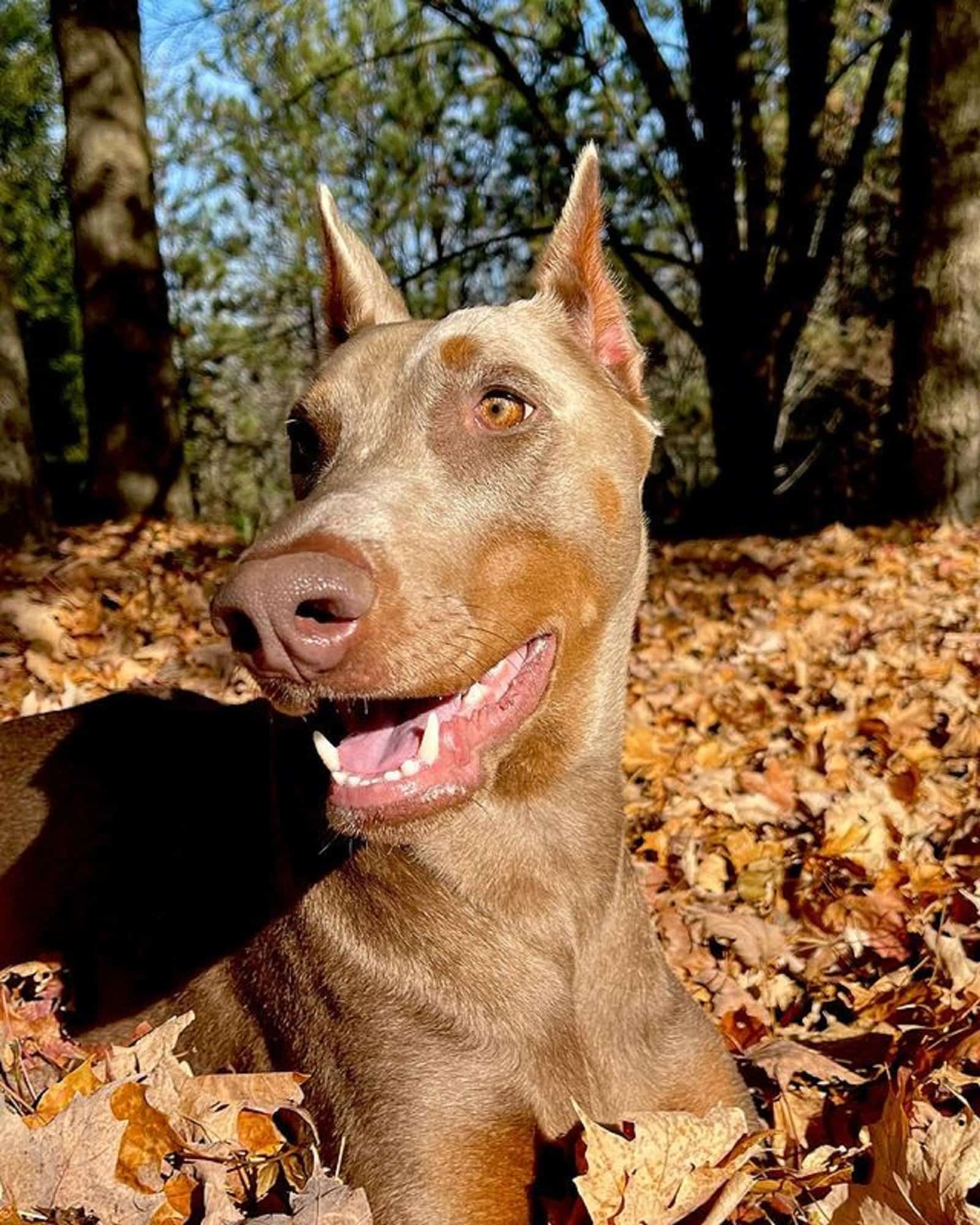
Like other Dobermans, fawn Dobermans have a pretty powerful and intimidating physical presence. They have a sleek, muscular body and a long, square-shaped head. Their almond-shaped, deeply-set eyes have an alert appearance. Brown eyes range in tone from mild to dark.
The natural ears of the fawn Doberman are long and drooping, but they are frequently clipped. The nails are black, and the nose is a dark tan color. The tail is typically long, although some people decide to dock it just after birth.
The fawn Doberman‘s eyes, snout, neck, chest, and tail may have rust- or white-colored markings. The fawn hue of the Doberman Pinscher is a lighter shade of brown rather than tan.
The red hue of the Doberman Pinscher, which is genetically transmitted through a recessive gene, is diluted in the fawn color.
Due to the hue, some people can mistake the fawn Doberman for a German Weimaraner dog. Weimaraners are frequently described as having a lilac coat, which is remarkably similar to the fawn coat of Doberman Pinschers.
Another interesting thing, at least to me, is that the Isabella Doberman often has blue eyes; therefore, they are among dog breeds that may have blue eyes!
What Is The Color Of Isabella Dobermans?
Dobermans that seem to be fawn or Isabella-colored are considerably less common than those that are black, and also rust, or red and rust, and some experts believe that this color is the least common of all the Doberman shades.
These Dobermans look more like their Weimaraner ancestors (thanks to the light brown or tan fur) than their black and red counterparts do. In fact, a coat that resembles lilac, almost exclusively found in Weimaraner dogs, is referred to as Isabella.
Melanophilin, the gene that causes this dilution, also produces a dilution of such a red gene, which is why a “red” Doberman (bb), including both dilution genes (expressed (dd)) is a fawn Doberman.
Doberman Pinscher Colors
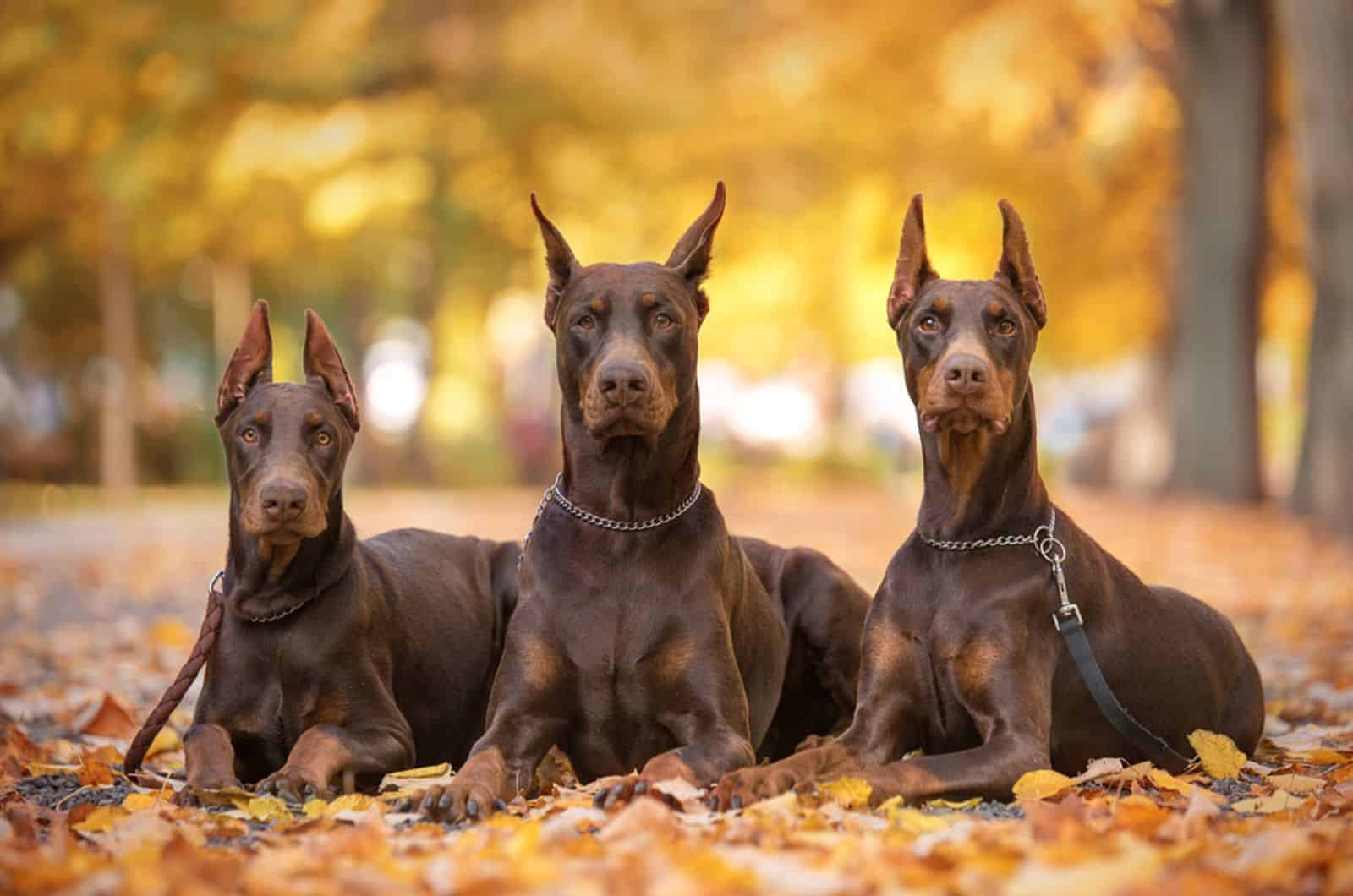
As in every other dog breed of similar heritage, the Doberman Pinscher has many different colors for you to decide from. The colors of Dobermans vary highly, making them one of the most colorful dog breeds out there.
However, this dog breed is most famous for its black-rust smoking attire!
You should dig more deeply into the topic of the colors of Dobermans here. However, I will do my best to present you with 5 Doberman colors, from most to least common.
1. Black And Rust Doberman
When someone discusses the Doberman breed, you probably picture black and rusty (or black and brown) Dobermans.
These canines not only have the most popular coat type, but also the most coveted. There are various options for Doberman hues besides just black and brown.
This coat type is characterized by a silky black background and tan patterns with distinct lines. The differences between the two coat colors stand out firmly.
The dog’s face, snout, ears, torso, just below the tail, and legs all have attractive rust or tan patterns that are speckled over the base of the dog’s black hair.
You can see how beautiful these Dobies are now that you’re able to picture them.
The so-called hallmark color of such dogs is black and tan (or rust). Some people refer to them as black and brown Dobies. Regardless of what you call them, the color of these Dobermans will always be the most popular choice worldwide.
2. White Doberman Pinscher / Cream Doberman
White Dobermans are the most uncommon of all colors. The degree of individuality is determined by how frequently this coloration appears rather than how beautiful the color is.
Because there isn’t any other color option that would designate white Dobermans as cream or beige, even those with a creamy coat are still referred to as white.
Sadly, throughout the years, inbreeding has led to the white coat. All white / cream Dobermans are now considered to be partially albino Dobermans.
Sadly, despite their attractiveness, these dogs do not appeal to the official clubs or dog owners who are concerned with their pets’ welfare.
Albino dogs, for example, have a variety of health issues that aren’t often apparent. It is well known that they have some behavioral problems as a result of inbreeding. Additionally, they are susceptible to light, prone to blindness, and have extremely poor vision.
However, photosensitivity, skin disorders, cancer arising from skin problems, and eye abnormalities are just a few of the numerous health issues with the Doberman puppy.
What you probably didn’t know is this: There are many nations that forbid white Dobermans. Additionally, the American Kennel Club is attempting to prohibit them from the country.
3. Red Doberman
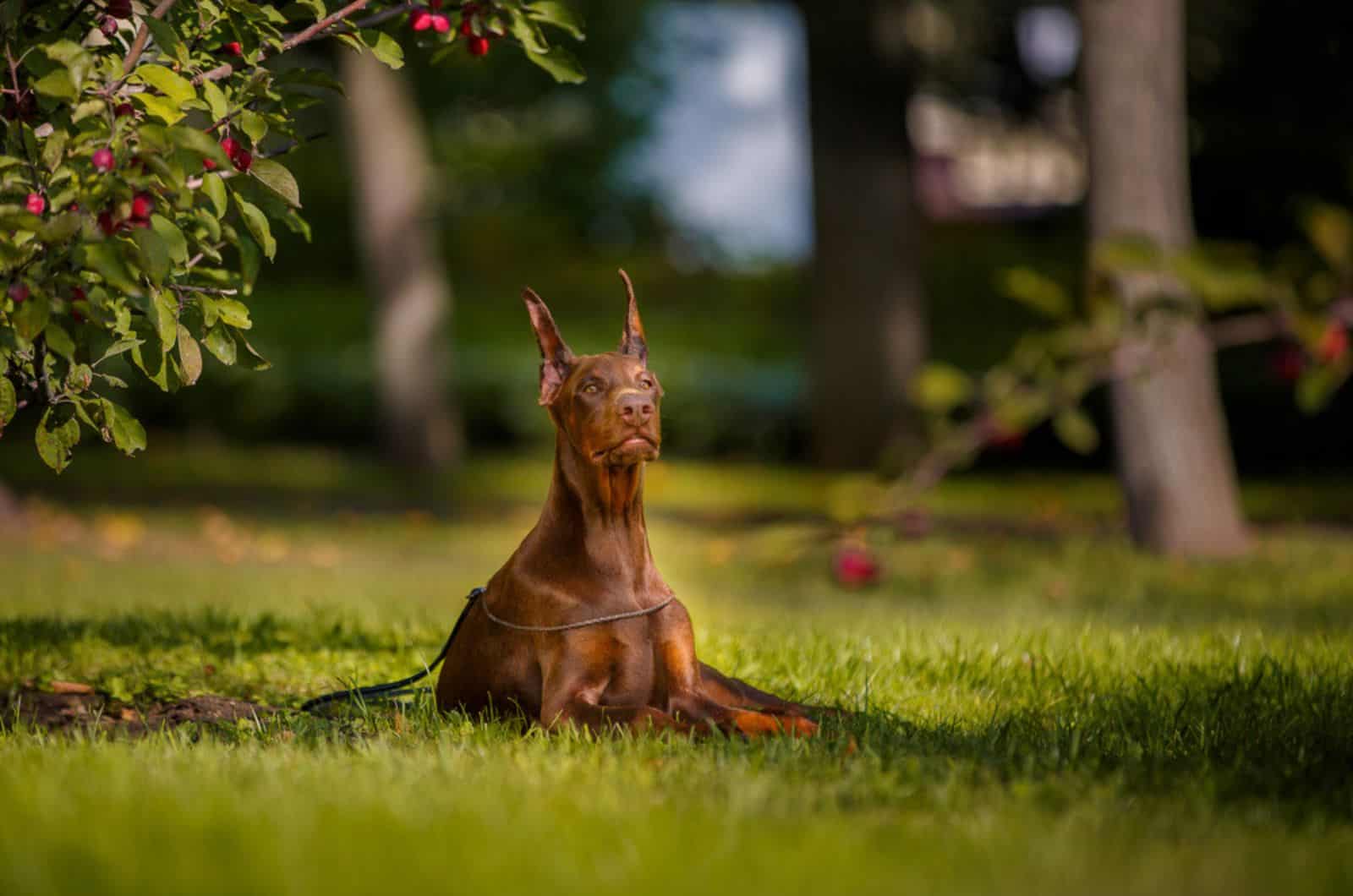
Solid red is a different hue for a melanistic coat.
These Dobies, often known as chocolate Dobes, are unethical to breed, rear, and own as you might expect.
While not particularly frequent, the red Doberman is quite rare, and very few dog owners can vouch for having one. They are not the most uncommon of all, but they are not as common as other Doberman colors.
4. Black Doberman
On the streets, all-black dogs are frequently sighted. In actuality, all dogs have one of the same coat colors, which is black. Contrary to popular opinion, however, a black Doberman is not an example of it.
Black-coated Dobermans are melanistic Dobermans. Surprisingly, this type is very uncommon. Many people think that a Doberman that is black and rust, with light contrasting, can pass for a black variation. However, they could not be more mistaken!
Breeding Black Dobermans are utterly unethical, and they have a host of severe health problems. The dilute gene cannot manifest because the dominant black gene prevents it from doing so.
It would be best if you used carefulness when purchasing all-black puppies from breeders because this is an unrecognized coat color by the kennels.
5. Tan Doberman And The Isabella Doberman
Fawn, as well as tan Dobermans actually have very little to no contrast between their essential coat and their markings. Although the difference is tiny, if you observe the dogs from a different angle, you’ll notice that they still retain the distinctive tan markings.
Isabella, as well as tan Dobermans have a very charming and comical appearance. They are indeed different from the other variants of Doberman colors!
The Isabella Doberman variant is the rarest Doberman Pinscher color, and therefore, the most expensive one.
What Kind Of Personality Does The Isabella Doberman Possess?
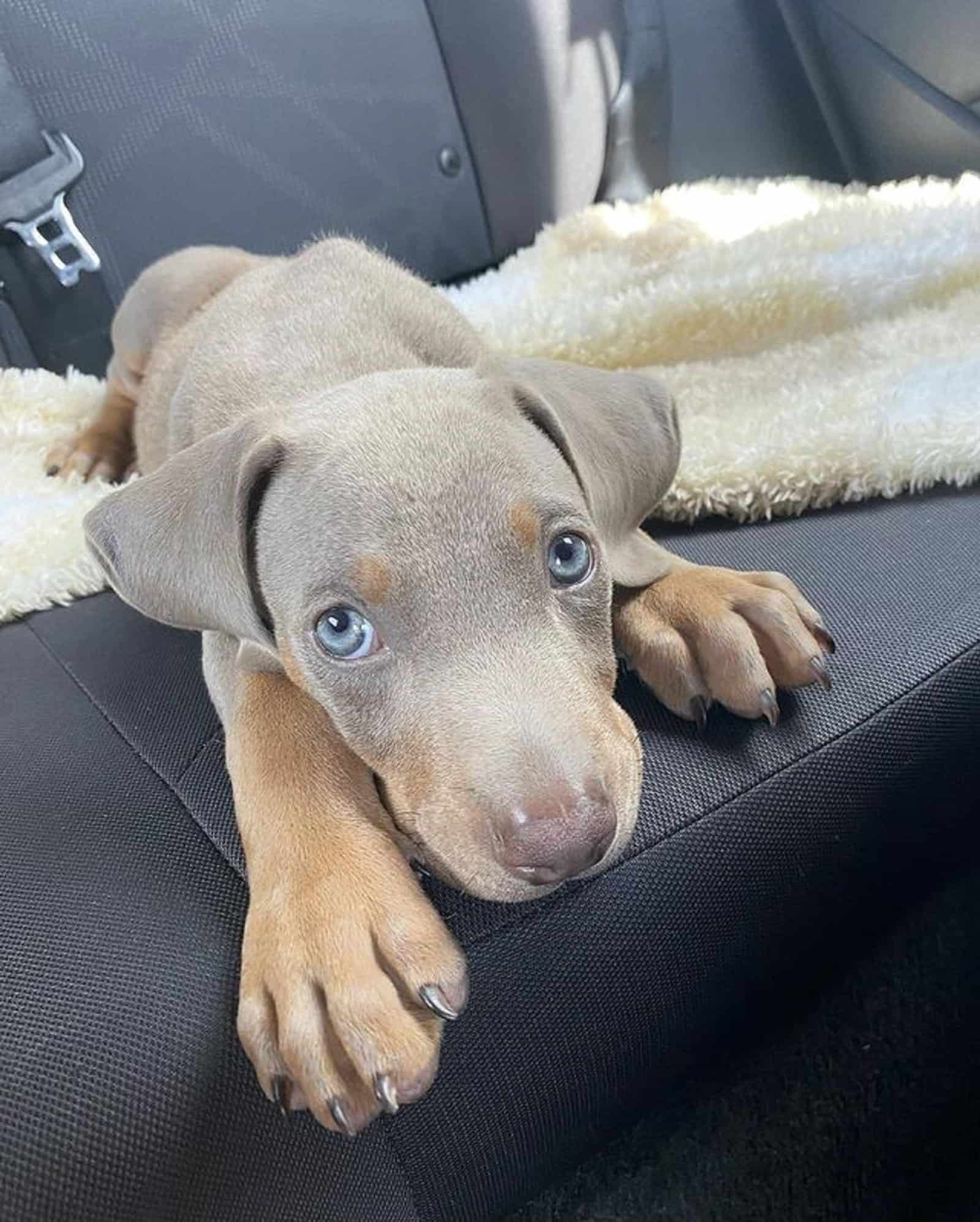
Fawn Dobermans may have a violent exterior, but they have a tender heart, and are very loyal to their owner. They enjoy cuddling, and they have a reputation for being a little clingy from time to time, usually developing a connection with a particular family member.
Fawn Doberman Pinschers are also dominating and strong-willed, and if they are not adequately socialized from an early age, they may have the propensity to nip or bite.
As puppies, they use this behavior to assert their leadership over their littermates, and to obtain a better understanding of their surroundings.
As with most Dobermans, fawn Dobermans can be needy or clingy. They have earned the moniker “velcro” dog because they are susceptible to separation anxiety as well as frequently accompanying their master all around the house.
Once you purchase an Isabella Doberman Pinscher, you get to have a dog that is both incredibly smart and extremely energetic. You also receive a playful and enjoyable dog that is incredibly obedient and reliable around the family.
They are a family’s natural guardian, and they won’t hesitate to take action if they feel threatened, but they are not violent without cause. They are definitely among the famous large-sized guard dogs.
The Dobie enjoys mental and physical activity. Training them is simple, and they pick up things rather quickly. It might not be easy to keep them engaged in activities because of how quickly they pick things up.
They may have their own opinions, but when their owner is consistent and compassionate in their leadership, they are usually not unduly obstinate or difficult.
Is The Isabella Doberman A Good Family Pet?
A mature dog and an older kid can frequently coexist very well, provided you properly train the children on how to interact around dogs. However, a Doberman puppy and a tiny child are definitely not a sensible mix.
Naturally, every dog is unique, and some may not get along with children. However, once a Doberman recognizes the youngster as a member of its own family, they typically show the child a lot of love and protection.
Always keep an eye on your Doberman when it is around kids, just as you would do with any other large dog breed.
Numerous elements, such as training, socialization, as well as heredity, have an impact on personality. Puppies with good dispositions are interested and playful, approachable, and want to be cuddled.
Meeting the dog’s mother, siblings, or even other family members might be helpful in determining how the pup might turn out to be as an adult.
Like all dogs, Dobies require early socialization (or being exposed to a wide variety of sights, noises, and activities when they are young). In order to guarantee that the Dobie puppy develops into a well-rounded dog, socialization is essential.
Is The Isabella Doberman A Healthy Dog Breed?
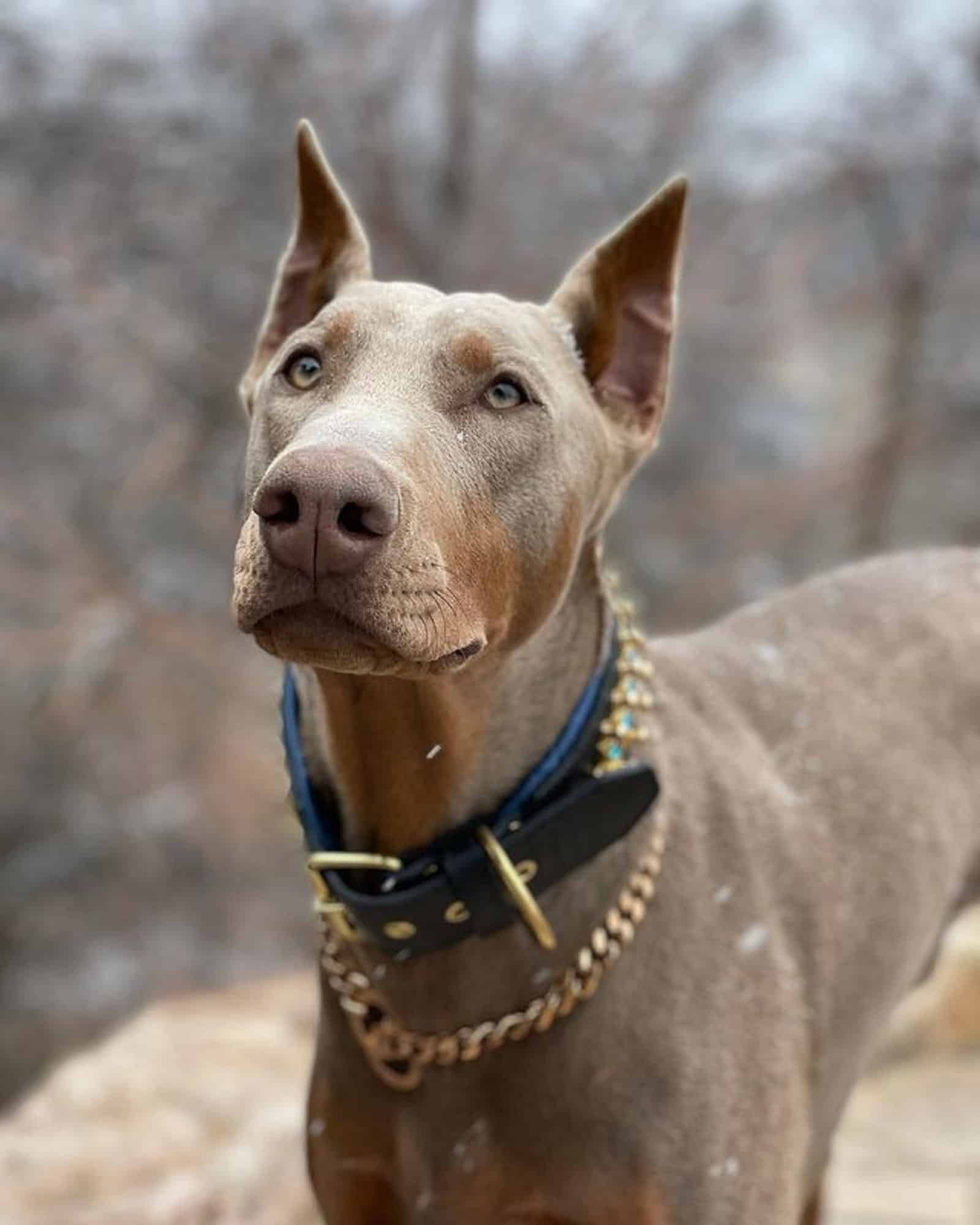
Dobies are typically healthy, but they are susceptible to some health issues, just like all breeds. Even though not all Dobies may contract one or more of these illnesses, it is nevertheless essential to be conscious of them if you are thinking about getting a Dobie.
This happy, healthy dog lives to be between 10 and 12 years old, with little to no difficulty. Nevertheless, there are a few ailments and health issues that plague the Doberman breed frequently.
Possible Health Issues Of The Isabella Doberman
As with any other dog breed, the Isabella Doberman has some health issues that you will have to be aware of. Especially if you are getting your Isabella Doberman from a Doberman rescue, you won’t know your pet’s genetic background.
In all of these cases, I present you with the most common health problems that an Isabella Doberman may face.
1. Color Dilution Alopecia (Skin Problems, In General)
Dogs with diluted fur colors are more susceptible to the genetic condition known as “color dilution alopecia,” or CDA. A dogs’ most prevalent diluted fur colors are fawn (soft brown), and blue (silvery or bluish-gray).
These fur hues can be seen on a wide variety of breeds. This genetic condition, also known as color variant alopecia or blue and fawn Doberman disorder, is brought on by a genetic abnormality that results in hair shafts breaking off at the base, and generally reduced hair development.
Color Dilution Alopecia is one of the skin issues that might affect fawn Dobermans. This genetic disorder is caused by the same recessive gene that gives them their fawn hue. It could appear in as early as six months, but it typically has no impact on their general health.
These dogs’ hair follicles have a propensity to rupture easily, which can lead to the development of small bald patches, and eventually total hair loss.
Ingrown hairs can cause itchiness and excessive skin peeling around the bald areas, which can be treated with medicated shampoos, skin lotions, and in some instances, oral antibiotics.
Again, for prescription dog shampoo alternatives that may assist with Dobermans’ skin problems, visit the link to our dog shampoo page above.
The coat’s blue sections are the only ones that are harmed. Inflammation and secondary infection are frequent. Although prescription shampoos may help reduce scaling and irritation, the illness is incurable.
2. Albinism
Doberman Pinschers with albinism have a pigment disorder that is genetic. Impacted puppies have a white or cream coat, pale eyes, and pink nostrils, lips, and eye rims at birth.
This syndrome makes dogs more sensitive to bright light, and makes them more likely to develop melanocytic tumors on their lips, skin, eyelids, and irises. The majority of dogs with this disease lead an everyday life.
A dog’s genetic susceptibility to oculocutaneous albinism can be consistently identified by using SLC45A2 gene testing in Doberman Pinschers.
Dogs inherit oculocutaneous albinism in quite an autosomal way, requiring multiple copies of the defective gene (one copy from each parent) for the condition to manifest.
In general, carriers do not show symptoms of the disease, but there is a chance that afflicted pups will result from mating with another recipient of the exact mutation.
Each pup conceived to this pair has a 25% risk of acquiring the illness, and a 50% probability of receiving one copy of the SLC45A2 genetic mutation and becoming a carrier.
For selecting breeding procedures, trustworthy genetic testing is crucial. It is not advised to breed known carriers to one another in order to eradicate this mutation from parental lines and prevent the possibility of afflicted puppies being born.
Lacking the mutation, Doberman Pinschers are not likely to produce afflicted offspring.
3. Von Willebrand’s Disease
This blood ailment, which is inherited, prevents the blood from clotting. Internal bleeding following an accident or surgery is a prominent sign, and other symptoms include heavy nose bleeding, gum disease, and intense stomach hemorrhage.
There is no cure, and the only treatment is a blood transfusion from healthy dogs. However, the majority of canines with von Willebrand’s syndrome may enjoy an everyday life. Dogs with this illness shouldn’t be bred. A vet can check your dog for it.
Taking Care Of A Blue Doberman
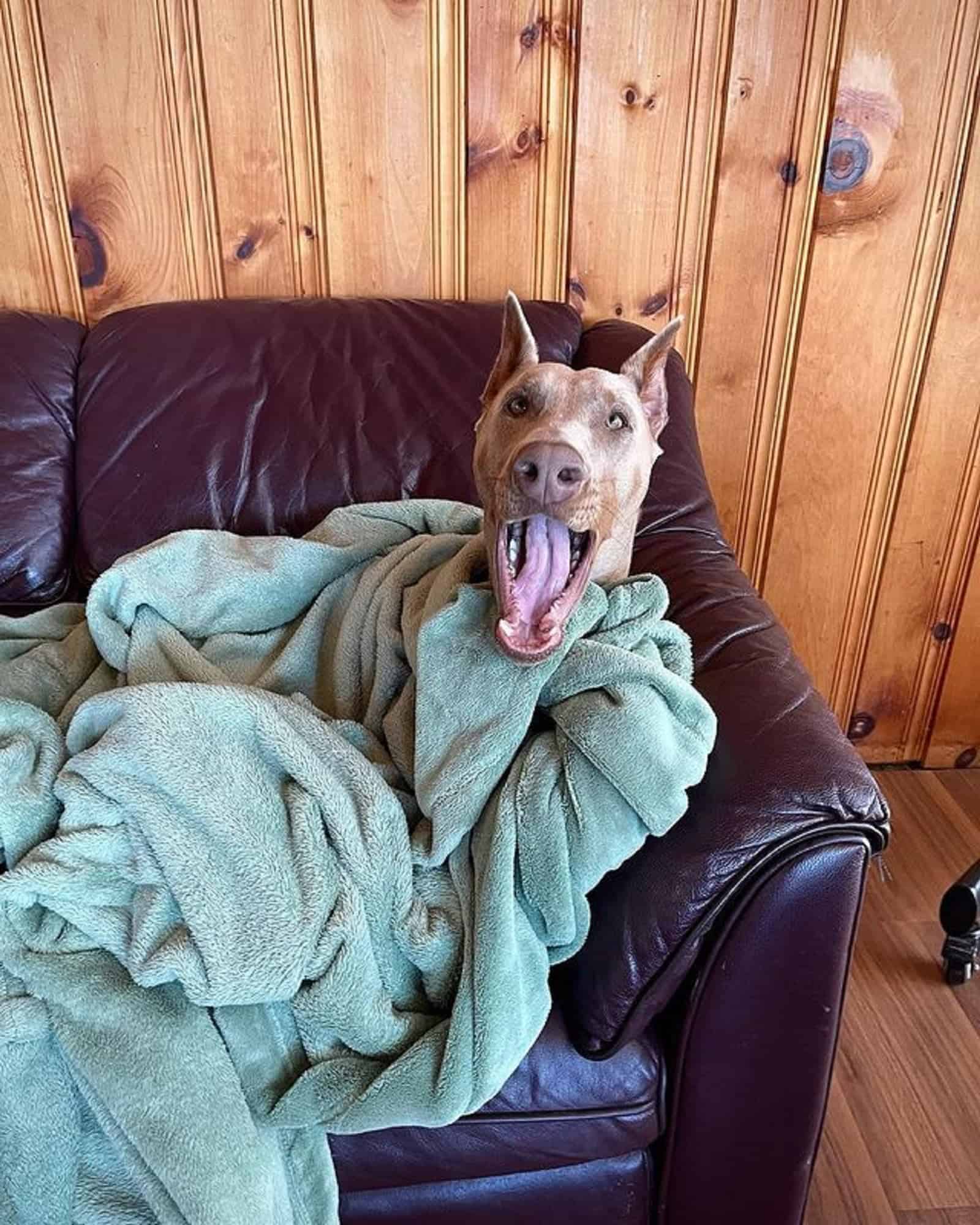
It’s not difficult to care for a Doberman, but just like with any other dog, there is some effort needed. Isabella Dobies require regular exercise and extensive instruction, but their grooming requirements are pretty simple to maintain.
You and this extremely intelligent dog will quickly form a close bond as a result of the total number of hours spent together.
Cleaning And Grooming Needs
Dobermans in fawn colorations require very little maintenance in terms of grooming. Apart from weekly brushing and washing, they are not fussy, high-maintenance dogs.
However, they are also more likely to develop skin conditions and lose their hair, so it’s crucial to frequently examine their skin and look for signs of hair loss.
Even if you always wash your dog’s skin and coat with dog shampoo, if the dog’s hair is falling out or if it has a skin disease, you must see your vet. The veterinarian could suggest using a particular shampoo for these situations.
Dog toothpaste and frequent tooth brushing are essential if you want to prevent dental problems in your dog, which also develop early in life.
It would be best if you ideally brush your fawn Doberman’s teeth every day. But, we recognize that this may be a near-impossible task for you, particularly if your calendar is hectic.
In light of this, brushing your dog’s teeth twice or 2 to 3 times a week will be sufficient.
Remember to cut your fawn Doberman’s nails before they grow too long as well. Longer nails imply a longer quick. Consequently, there is a greater likelihood that you will clip the nails too short and cause bleeding.
Use a dog nail sander that has a precision diamond-disk bit grinder and a whisper-quiet speed if you or the dog has previously had a nasty experience with nail clipping.
Many dog owners regret not using one of these earlier because it makes for a more enjoyable experience, and some dogs have actually fallen asleep while having their nails cut!
Feeding An Isabella Doberman
Approximately 2 to 4 servings of premium dry food should be consumed every day, split into two meals.
Size, gender, form, digestion, and degree of exercise all affect how much food an adult Doberman eats. Like people, dogs are unique creatures with different nutritional needs. A very active dog will require more food than a lazy dog, which should go without saying.
Your choice of dog food quality also matters. Less dog food will need to be added to your dog’s dish because superior dog food will go further in fueling your dog.
Instead of having food available all the time, maintain your Dobie in excellent condition by weighing out their food as well as feeding him twice a day. Offer him hands-on eye tests if you need to check if he is overweight.
Look at him, though. There must be a waist visible. Then, place your palms on his back only with your fingertips spread out and your thumb somewhere along his spine.
Without exerting much pressure, you ought to be able to sense, but not observe his ribs. They’ll need to eat less and exercise more if they can’t.
A meal that is well-balanced in lipids, proteins, and carbs is necessary for fawn Doberman Pinschers. To aid them with their skin conditions, your veterinarian could also suggest that you provide them supplements of vitamins and minerals, such as fish oil and omega-3 fatty acids.
Exercise Needs
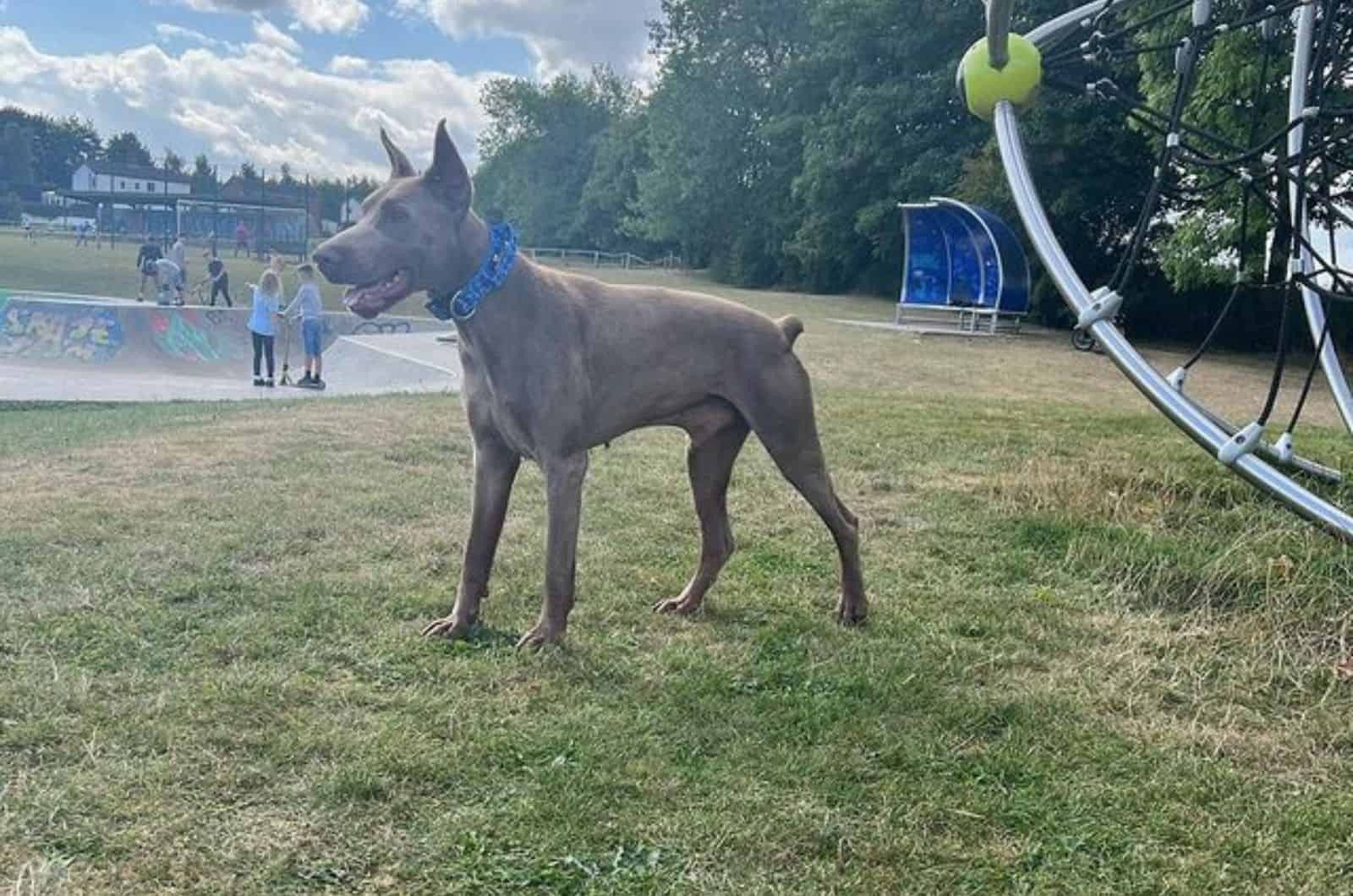
Dobermans are highly active dogs that need a lot of exercise. Dobermans require at least an hour of activity every day to suit their needs, which means daily walks are necessary.
Your Doberman will probably like running beside you many times a week if you’re a runner. Dobermans have a lot of energy, so they’ll enjoy the exercise as long as you start out slowly and increase the intensity over time.
Your dog has to get in shape for the job, just like you do. Interesting fact: An Isabella Doberman can run much faster than you can, at a top speed of almost 30 miles per hour!
Therefore, taking your dog on a bike ride is a terrific approach to help them genuinely stretch their legs. It’s also beneficial for dogs to occasionally play off-leash in a small back yard or dog park. A lot of Dobermans also like to swim and do other types of activities.
Dobermans require cerebral stimulation as well as physical activity. You can depend heavily on games, agility, or other similar activities to keep your dog entertained since they may not have “work” (such as being a therapeutic or a service dog).
Training The Isabella Doberman
Early socialization and training have positive effects on the fawn Doberman Pinscher. They are a reasonably bright breed, yet they could display slight stubbornness if not constantly trained.
It’s a good idea to enroll them in a kindergarten class for puppies. Regularly hosting guests, and taking your dog to crowded parks, dog-friendly shops, and on relaxed strolls will also enable them to develop their social abilities.
The secret to making them well-behaved is to provide them with positive reinforcement, and introduce them to other individuals and animals at a young age. This will help control any negative or clingy habits.
Remember to consider the value of raising your Isabella Doberman right. Any dog needs proper obedience training, but Dobermans require it more than other breeds. Keep in mind that these are big, strong dogs.
Because it has two loops that compress somewhat when the dog pulls, a Martingale leash can be a helpful teaching tool. It can assist pet parents in having more control over their pet, and teach the dog not to yank on the leash.
Harnesses for dogs are also helpful. If your dog pulls on the leash when you take him for a walk, your dog may require additional training.
Find a licensed dog trainer in your region who employs positive reinforcement if you have questions about basic obedience training. They’ll help establish the groundwork, and guide your Dobie’s development into a content and polite member of the household.
Dobermans are, fortunately, relatively simple to teach. They are brilliant, and they pick things up quickly. Again, moderate and positive encouragement is preferred because they can be hypersensitive to correction.
Utilize the Doberman’s inherent intellect to assist and direct them toward your objectives. They will value it once they realize how essential it is to you!
Socialization
It doesn’t take special equipment to train a Doberman to be sociable; instead, it takes thorough knowledge of canine psychology as well as a ton of perseverance and dedication.
It is crucial to socialize the puppy from an early age, and this needs to be done even after the dog has reached adulthood.
Building a Doberman’s confidence through reward-based training techniques and by promoting good interactions in a variety of scenarios are crucial to educating him to become friendly.
When a puppy is peaceful and at ease among other people or dogs, he is more likely to react in a pleasant way. Praising and rewarding the puppy when he responds appropriately is key to teaching great puppy socialization. Work at the rhythm and confidence level of the puppy.
To help him gain confidence, if he feels intimidated by large dogs, look for a smaller dog to meet up with. Encourage him when he maintains his composure when he notices larger dogs in the distance.
It’s critical that the puppy interacts with a diverse group of individuals. To ensure that the dog appreciates the interaction, this must be performed in a regulated manner.
It’s not a good idea, for instance, to expose the pup to children who are dog-phobic and shrink away, sobbing at the sight of the pup.
Instead, locate a sociable child who has a dog and is secure in how to react and greet others around canines. She will widen the pup’s exposure to that kind of individual and apply it to other individuals who are similar to her through her gentle nature.
What Would Be The Ideal Surrounding For The Isabella Doberman?
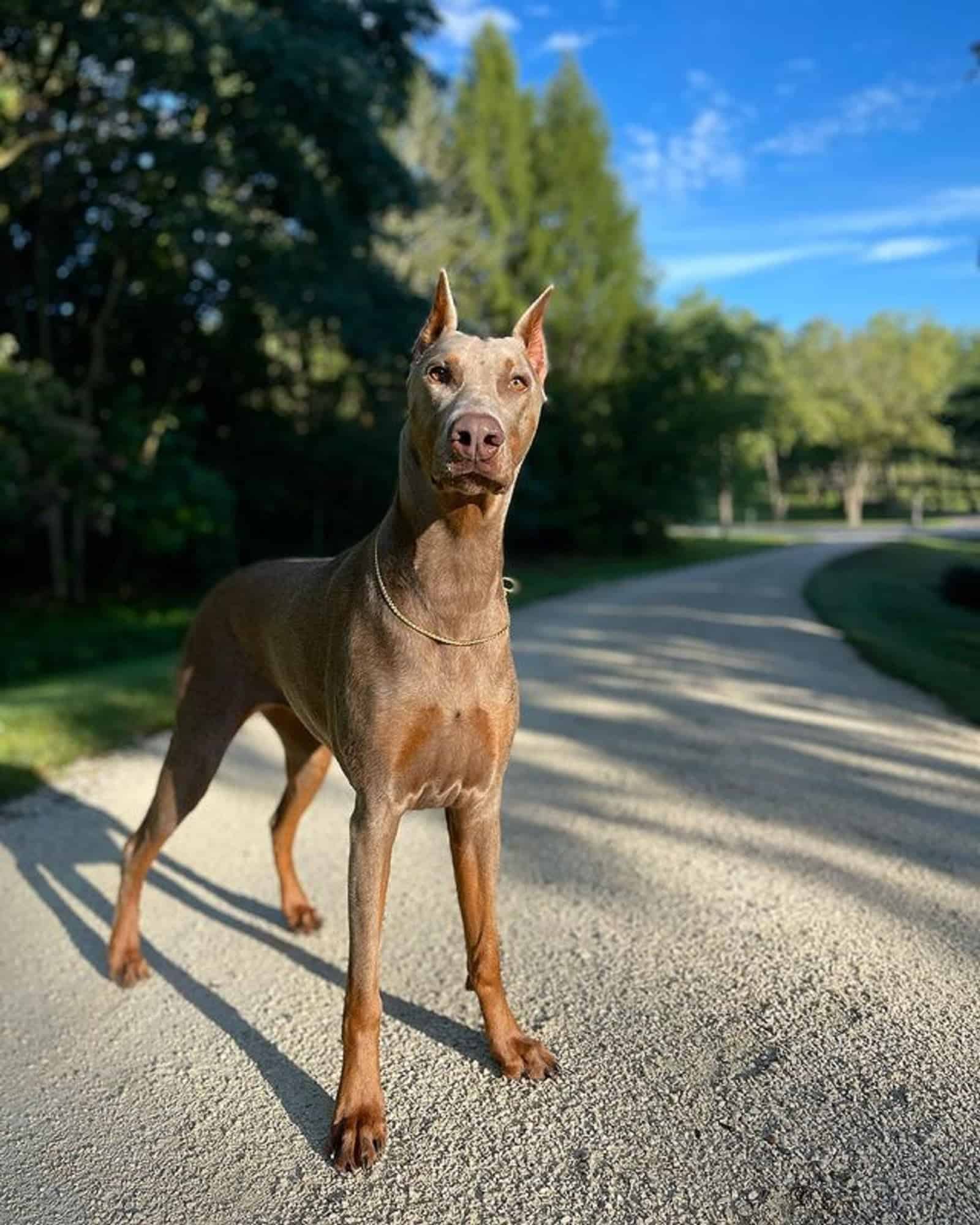
Your Doberman would obviously like having a great big yard to roam in, but as long as you’re taking care of their activity needs, they may live in an apartment. Some people could even enjoy spending time in a dog run that is the right size.
The Doberman doggie needs both indoor as well as outdoor time in their optimal surroundings. And, they place a strong focus on engaging in activities with you.
Although adult dogs need time outside for exercise and general health, they prefer to stay home with their family. Thus, they must participate in daily household chores.
Additionally, because they are naturally slim, Dobermans may overheat on warm summer days, and they lack the length of coat needed to endure prolonged cold weather.
Final Word
Whether you decide for ear cropping or against it, the Isabella Doberman’s fawn puppies will steal your heart in no time. A two-month-old fawn puppy, in contrast to the black and tan Doberman (most famous purebred Doberman), may be lost in snow due to its unique color.
The fawn Doberman Pinscher (or the Isabella Doberman Pinscher) has a distinctive appearance and a few health problems.
This dog can be the appropriate fit for you if you have the resources and time to devote to its health, and if you mind the additional maintenance care that these dogs require.
It’s understandable why Doberman owners adore their dogs so much. These dedicated dogs provide their family with a lot of love and protection, and they are the happiest when they are with them.
Dobermans are intelligent, easy to train, and have a short coat that makes grooming a snap. They are also courageous, beautiful, and bold, which means that they will become your best friend in no time. What else is there to wish for?
You May Also Like To Read:
- Cane Corso Doberman mix
- Pitbull Doberman mix
- Why Do Dogs Growl At Nothing

